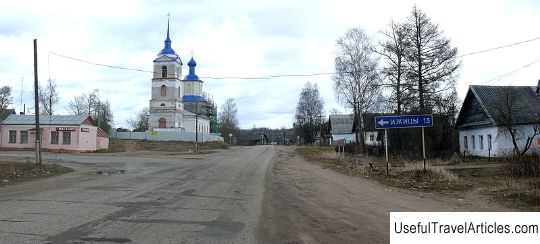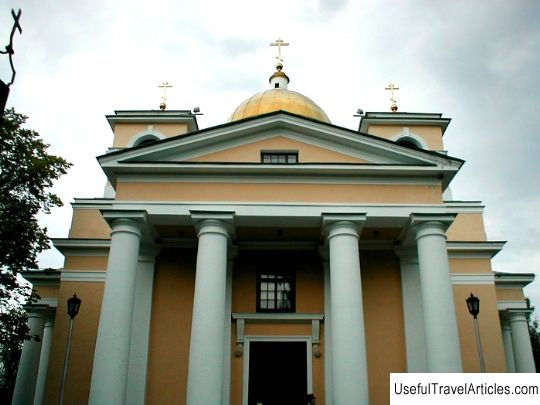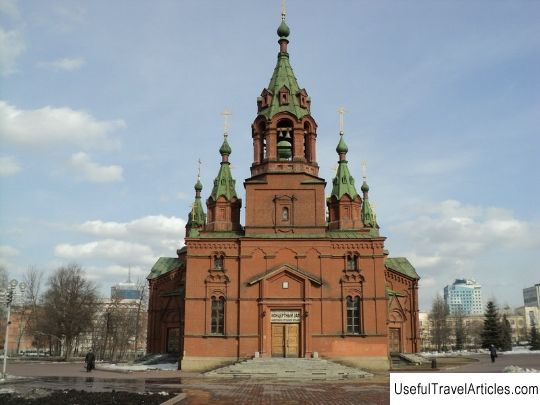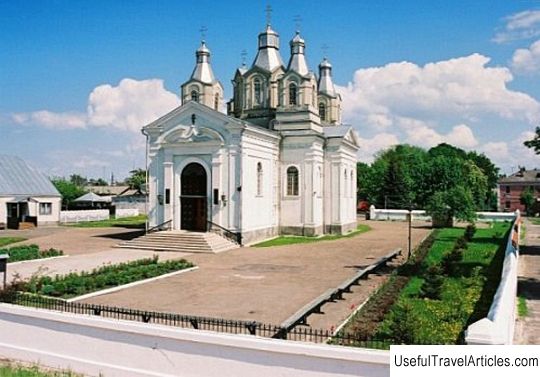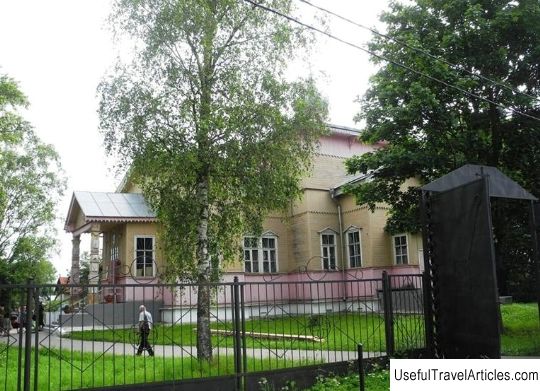Alexander Nevsky Church description and photos - Russia - North-West: Novgorod region
Rating: 8,4/10 (890 votes) 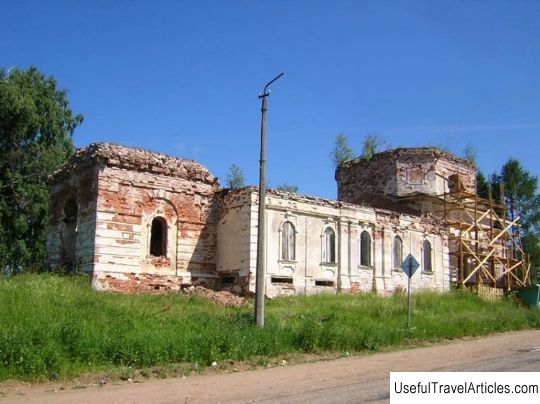
Alexander Nevsky Church description and photos - Russia - North-West: Novgorod Region. Detailed information about the attraction. Description, photos and a map showing the nearest significant objects. Photo and descriptionA long time ago in the village of Yazhelbitsy there was a wooden church, which was pretty dilapidated by the beginning of the 19th century. In 1803, the great Emperor Alexander I drove along the Petersburg highway and saw a small dilapidated church. He decided at his own expense to build on this place a new, but only stone church in honor of his heavenly patron Saint Prince Alexander Nevsky. By 1805, the stone church was ready. Only 20 years later, the parishioners made the first large-scale repairs in the church and replaced the plank roof with an iron one. In 1836, the western part of the temple was significantly enlarged - a warm church was built here. For this reason, the bell tower was dismantled and rebuilt, which made up a single whole with the church and perfectly marked the main entrance of the temple. The height of the new bell tower with a spire reached 38 m (18 fathoms), width - 13 m (6 fathoms), length - 26 m (12 fathoms). The church consisted of two chapels. The first is the northern border, built in honor of the Holy Great Martyr Dmitry of Thessaloniki; the second - southern - in honor of St. Nicholas of Mirliki, the famous miracle worker. The next renovation in the church was carried out in the 1880s, when a new iconostasis was ordered, necessary for the chapel in honor of St. Dmitry Thessaloniki. In addition to the village of Yazhelbitsy, the parish of Alexander Nevsky included the following villages: Mironushka, Knyazhevo, Izhitsy , Zagorje, Varnitsy, Kuvizino, Pochep, Kuznetsovka, Pestovo, Velikiy Dvor, Kiselevka, Sosnitsy, Gorushki and some others. A peasant woman by the name of Kalkina from the village of Kuznetsovka presented the temple with 15 yards of brocade intended for clothing on the holy throne; a peasant from the village of Zagorie Shilov - a deacon's priestly vestment; a peasant from Yazhelbitsy Semkin - brocade and metal banners; brothers Fyodor and Mikhail Zaitsevs from the village of Yazhelbitsy generously donated a carpet, a shroud, a portable lantern for the procession and a banner. A large amount of funds that were so necessary to maintain the appearance of the temple came from local residents. In addition, people from other places donated a lot. In 1894, the righteous John of Kronstadt presented the church of Alexander Nevsky with deacon and priestly vestments, analogies, table covers and much more. Gifts and gifts came from the priest of St. Nicholas Cathedral in St. Petersburg, Father Valentin, the management staff of the Kalinkinskaya St. Petersburg hospital and many others. In December 1918, an order was received from the Department of the Office of the Valdai District Council of Workers and Peasants' Deputies for Internal Affairs that church property should be transferred to the parish for safekeeping. For this, about forty representatives were selected. Priest Konstantin Gruzinsky, who served in the church since 1910, in his chronicle of the church notes that in the 1920s-1930s all parishioners performed their Christian duty with special zeal, and that the need for the church is not diminishing. In 1929, the church was renovated, and the temple was again painted by Shirshin Vasily Kuzmich from the Ivanovo village of the Goritsky region. This event happened at a time of negative attitudes towards the church during the Soviet era, despite the fact that already in 1928 there was a big crop failure in the Yazhelbitsky district and a terrible famine began. In 1934, the last renovation of the church was made: the whitewash in the warm church and in the bell tower was renewed, the roof was repaired. The church was finally destroyed and closed in 1937: the bells were dropped and broken, the temple premises were given to a rural House of Culture, where gatherings of townspeople and various rallies were often held. The church priest was shot. In 1941, the village of Yazhelbitsy became a front-line village, and a firing point was equipped in the large basement of the church. Even today, you can see how its loopholes look directly towards the nearby highway. In 1998, at the initiative of the villagers of Yazhelbitsa, work began on cleaning up church ruins, as well as preparing the necessary project documentation. In addition, the required amount of funds was collected.     We also recommend reading Portaria description and photos - Greece: Volos Topic: Alexander Nevsky Church description and photos - Russia - North-West: Novgorod region. |
